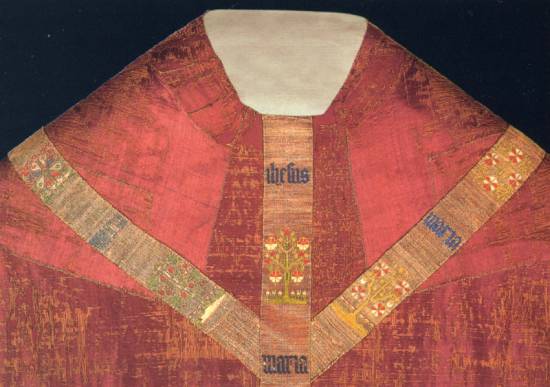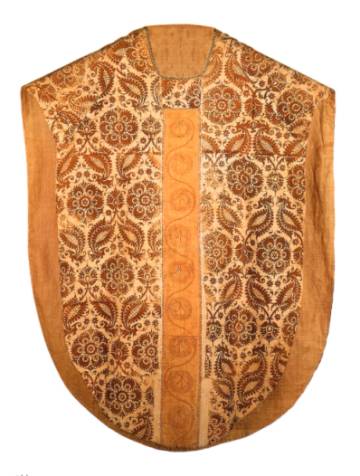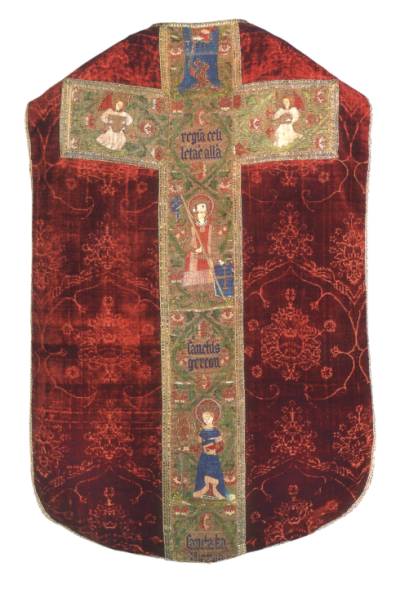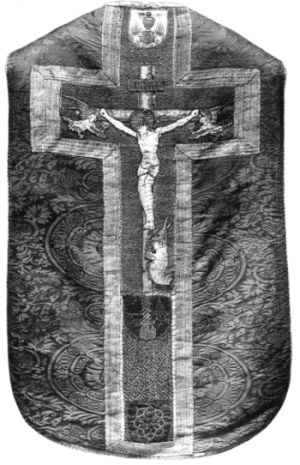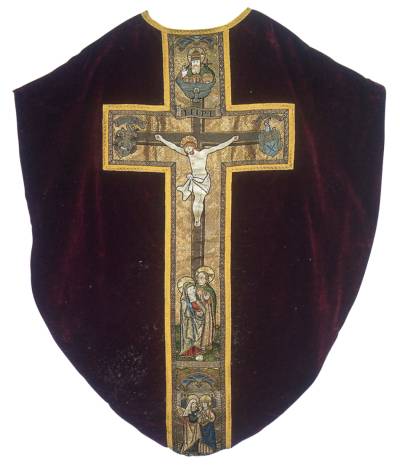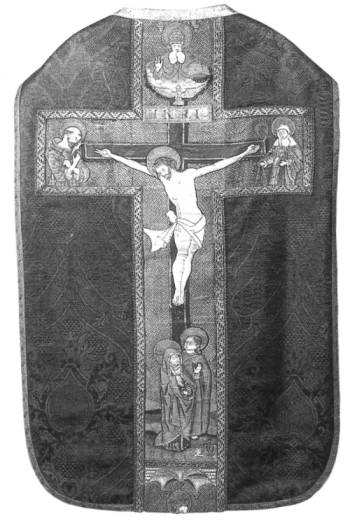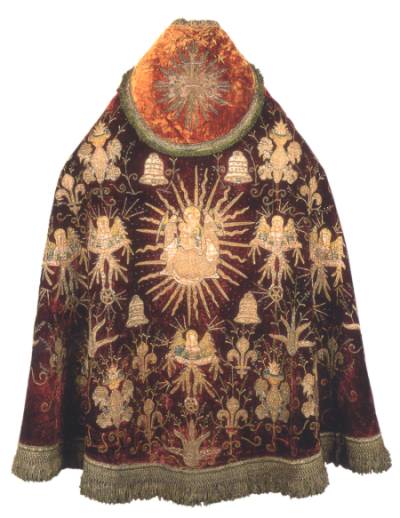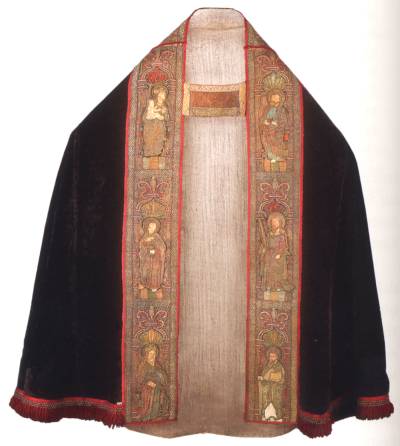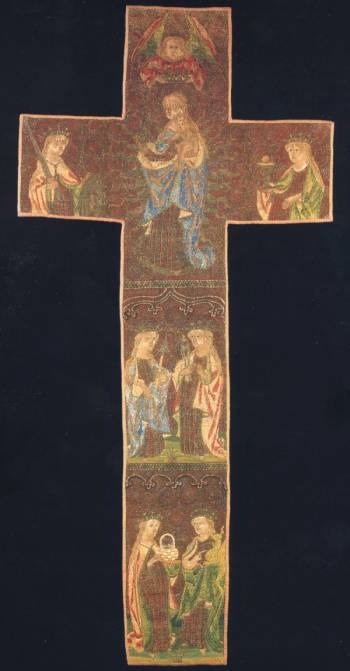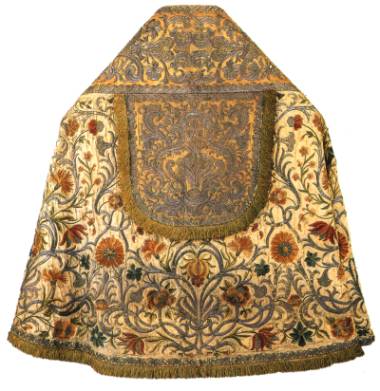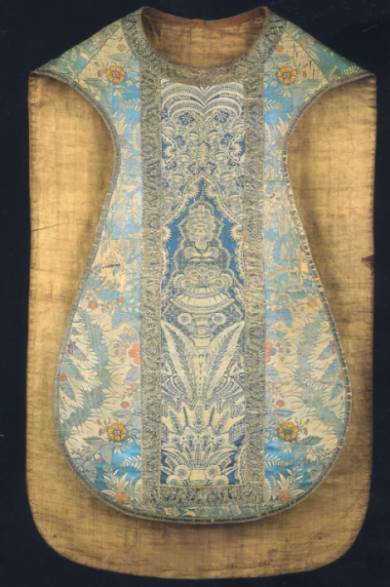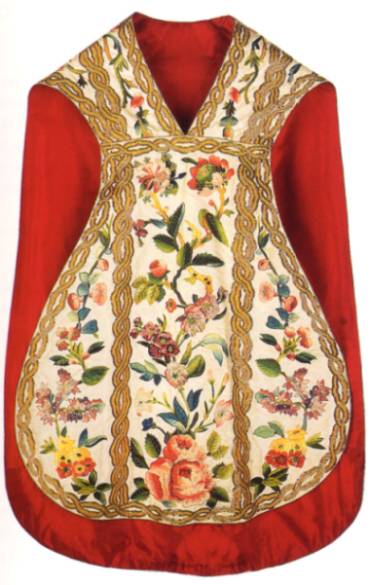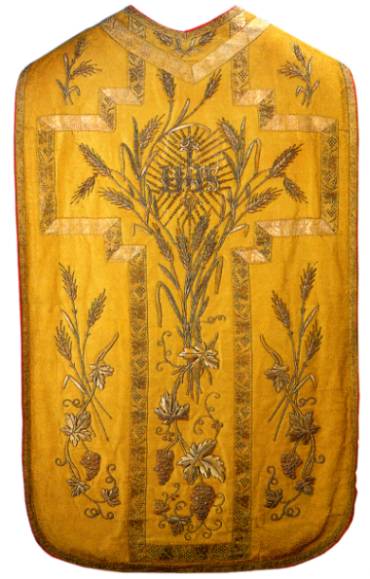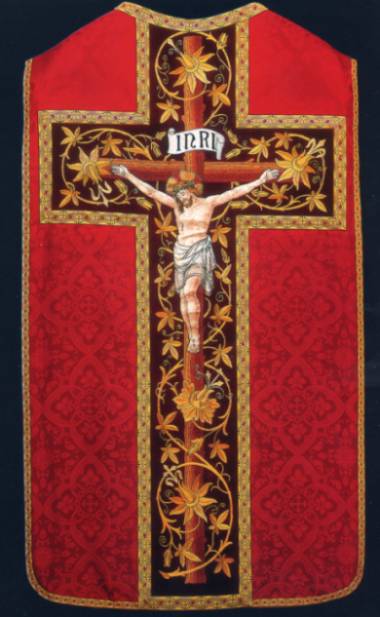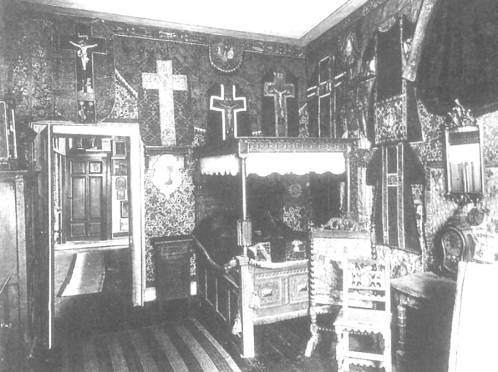
Bedroom of Alexander
Schnütgen,
Photo by E. Hermann, Köln 1910
In
the introductory chapters, the author names some general
problems in researching vestments:
Up to the present day art history only very rarely
related art and literature. This kind of research is at
its very beginning.
Another problem lies in the fact that, in private collections which later became museum collections, important basis material is mostly completely absent. Only very few of Schnütgen's letters give information about his purchases or about how he acquired the vestments. There are no handwritten notes about the origin of the collection or about its formation or losses.
The author has studied all the old museum catalogues. She devotes attention to the systems of compiling the inventory, evident from different handwritings.

